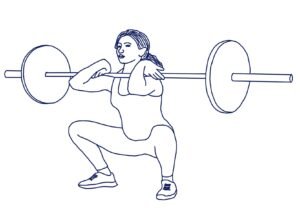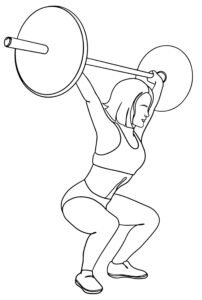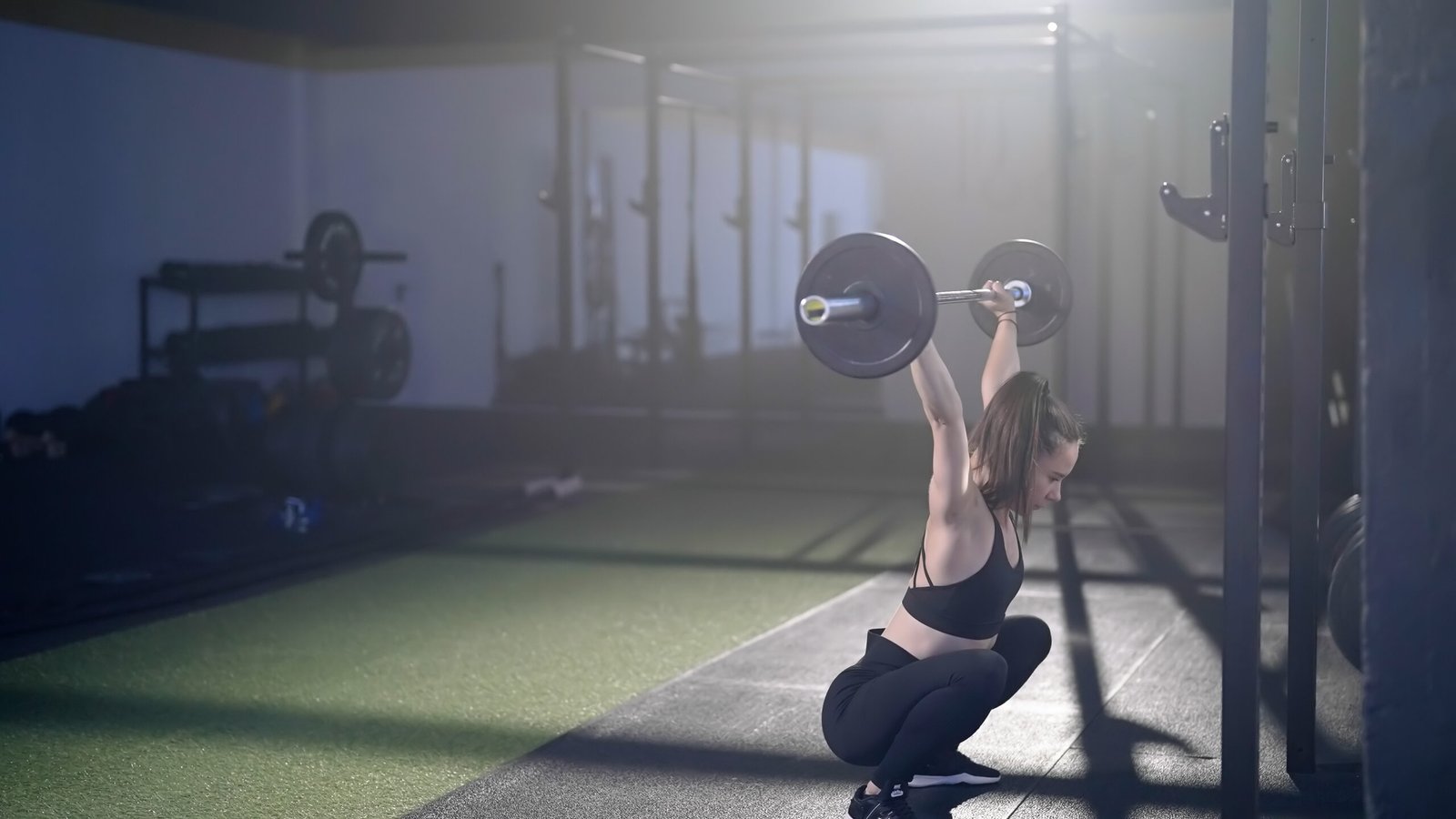The squat is one of the most popular exercises in both fitness and athletic training programs. One of the main reasons for its popularity is because of its many health benefits. Some of these benefits include the strengthening of the muscles in the lower body; burn a lot of calories, which can help you lose weight; strengthens tendons, ligaments and bones, which can help reduce injuries in the lower body; help you stay/become more limber as you age; and help you feel and look good.
While there are a couple of dozen or more squat variations, the three that get the most attention are the front squat, back squat, and overhead squat because they seem almost identical, except for the position of the barbell. Interestingly, these three variations of the squat exercise have distinct techniques, muscle engagements, and benefits. Here’s a detailed comparison:
(1) Front Squat

Technique:
- The barbell is positioned on the front of the shoulders, resting across the clavicles and deltoids. The lifter typically holds the bar with their fingertips under it, elbows pointing forward.
Muscle Engagement:
- Primarily targets the quadriceps, but also engages the core, upper back, and glutes. It requires significant core stability and upper back strength to maintain the upright torso position.
Benefits:
- Greater emphasis on the quads due to the more upright torso position.
- Enhances core strength and stability.
- Can be easier on the lower back compared to the back squat.
Challenges:
- Requires good mobility in the wrists, shoulders, and thoracic spine. The front rack position can be uncomfortable for some lifters.
(2) Back Squat

Technique:
- The barbell is positioned on the upper back, resting on the trapezius muscles (high-bar position) or slightly lower on the rear deltoids (low-bar position). The lifter grips the bar slightly wider than shoulder-width apart.
Muscle Engagement:
- Targets the posterior chain (glutes, hamstrings, lower back) more than the front squat, while also working the quadriceps.
Benefits:
- Allows for lifting heavier weights due to a more stable and balanced position.
- Stronger engagement of the posterior chain, beneficial for overall strength development.
- Versatile for various athletic training and bodybuilding purposes.
Challenges:
- Can place more stress on the lower back. Requires good shoulder and hip mobility.
(3) Overhead Squat

Technique:
The barbell is held overhead with arms fully extended, slightly wider than shoulder-width apart. The lifter must keep the bar directly over the midfoot, requiring significant balance and coordination.
Muscle Engagement:
- Full-body exercise engaging the shoulders, upper back, core, and lower body (quads, hamstrings, glutes).
Benefits:
- Enhances overall body stability, coordination, and mobility.
- Strengthens the shoulders and upper back.
- Improves balance and proprioception.
Challenges:
- Requires excellent shoulder and thoracic mobility. The most technically demanding of the three, making it harder for beginners. Limited by shoulder strength and stability.
(4) Summary
Front Squat:
- Best for targeting quads and core stability, easier on the lower back, but requires good front rack mobility.
Back Squat:
- Best for overall strength and power development, allows for heavier lifting, but places more stress on the lower back.
Overhead Squat:
- Best for full-body stability and mobility, improves balance and coordination, but is the most technically challenging.
Each squat variation serves different purposes and can be incorporated into training routines based on individual goals, strengths, and limitations. Do you want to implement squats into your workout routine? Let a health and fitness coach build you a personalized exercise program.

